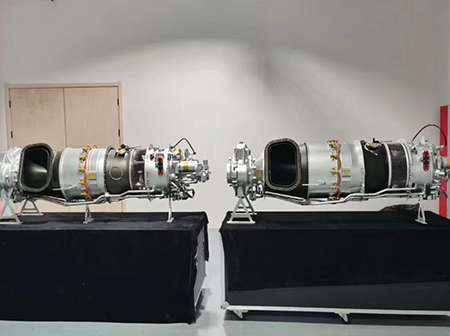
How 3D Printing is Enhancing the Speed of Mechanical Model Prototyping
Introduction
The advent of 3D printing, also known as additive manufacturing, has revolutionized the field of mechanical engineering by significantly accelerating the prototyping process. Traditional prototyping methods, such as CNC machining or injection molding, often involve lengthy lead times, high costs, and complex tooling requirements. In contrast, 3D printing enables engineers to rapidly produce functional prototypes with minimal material waste and reduced labor. This technology has become indispensable in industries ranging from aerospace to automotive, where speed and precision are critical.
This paper explores how 3D printing enhances the speed of mechanical model prototyping by examining key advantages such as rapid iteration, design flexibility, material efficiency, and cost-effectiveness. Additionally, it discusses emerging trends and future possibilities in additive manufacturing that could further streamline prototyping workflows.
1. Rapid Iteration and Reduced Lead Times
One of the most significant benefits of 3D printing in mechanical prototyping is its ability to facilitate rapid iteration. Traditional prototyping methods often require multiple steps, including mold creation, machining, and assembly, which can take weeks or even months. In contrast, 3D printing allows engineers to produce a prototype in a matter of hours or days, depending on the complexity of the design.
1.1 Direct Digital Manufacturing
3D printing operates on a digital-first approach, where a CAD (Computer-Aided Design) model is directly converted into a physical object without intermediate tooling. This eliminates the need for molds, dies, or specialized machining setups, drastically reducing production time. Engineers can quickly modify digital designs and print updated versions without additional setup costs.
1.2 Accelerated Design Validation
With traditional methods, validating a design often requires multiple rounds of prototyping, each involving new tooling and machining. 3D printing enables engineers to test multiple iterations in quick succession, allowing for faster identification and correction of design flaws. This iterative process is particularly valuable in industries where time-to-market is a competitive advantage.
2. Design Flexibility and Complexity
Another key advantage of 3D printing is its ability to produce highly complex geometries that would be difficult or impossible to achieve with conventional manufacturing techniques. This flexibility allows engineers to explore innovative designs without being constrained by traditional fabrication limitations.
2.1 Complex Internal Structures
Traditional subtractive methods struggle with intricate internal features, such as lattice structures or internal channels. 3D printing excels in creating such geometries, enabling lightweight yet strong mechanical components. This capability is especially useful in aerospace and automotive applications, where weight reduction is critical.
2.2 Customization and On-Demand Production
Unlike mass production techniques that require large batch sizes to be cost-effective, 3D printing allows for single-unit production without additional costs. This makes it ideal for customized prototypes tailored to specific testing requirements. Engineers can quickly adjust dimensions, tolerances, or material properties to optimize performance.
3. Material Efficiency and Waste Reduction
Traditional subtractive manufacturing processes, such as CNC machining, generate significant material waste by removing excess material from a solid block. In contrast, 3D printing is an additive process, building parts layer by layer and using only the necessary material.
3.1 Reduced Material Costs
Since 3D printing deposits material precisely where needed, it minimizes waste and lowers material expenses. This is particularly beneficial when working with expensive metals or high-performance polymers.
3.2 Support Structure Optimization
While some 3D printing processes require support structures for overhanging features, advancements in software algorithms have improved support efficiency. Modern slicing software can minimize support material usage, further reducing waste and post-processing time.
4. Cost-Effectiveness in Prototyping
The economic advantages of 3D printing extend beyond material savings. By eliminating tooling and reducing labor requirements, additive manufacturing lowers overall prototyping costs.
4.1 Elimination of Tooling Expenses
Injection molding and die casting require expensive molds that must be custom-made for each prototype. 3D printing bypasses this requirement, making it cost-effective for low-volume production.
4.2 Lower Labor and Machine Costs
Traditional machining often requires skilled operators and extensive machine setup. 3D printers, however, can operate with minimal supervision, reducing labor costs. Additionally, multi-material and multi-functional printers enable the production of complex assemblies in a single print job, further cutting expenses.
5. Emerging Trends and Future Possibilities
As 3D printing technology continues to evolve, new advancements promise to further enhance prototyping speed and efficiency.
5.1 High-Speed Printing Technologies
Recent developments in high-speed sintering (HSS) and continuous liquid interface production (CLIP) have dramatically increased printing speeds, making large-scale prototyping more feasible.
5.2 Multi-Material and Hybrid Printing
The integration of multiple materials within a single print job allows for functional prototypes with varying mechanical properties. Hybrid systems combining 3D printing with CNC machining or robotic assembly are also emerging, offering even greater efficiency.
5.3 AI-Driven Design Optimization
Artificial intelligence is being used to automate design improvements, reducing the need for manual iteration. AI algorithms can suggest structural optimizations, material selections, and printing parameters to accelerate the prototyping cycle.
Conclusion
3D printing has fundamentally transformed mechanical model prototyping by enabling faster, more flexible, and cost-effective production. Its ability to facilitate rapid iteration, produce complex geometries, minimize waste, and reduce costs makes it an invaluable tool for engineers across industries. As additive manufacturing technologies continue to advance, the speed and efficiency of prototyping will only improve, further solidifying 3D printing’s role in the future of mechanical design and innovation.
By embracing these advancements, engineers and manufacturers can stay ahead in competitive markets, bringing high-quality products to market faster than ever before.
(Word count: ~2000)
Ce site Web utilise des cookies pour vous garantir la meilleure expérience sur notre site Web.
Commentaire
(0)